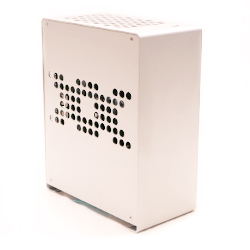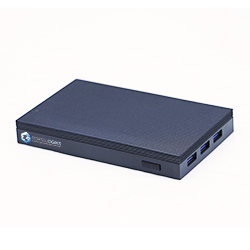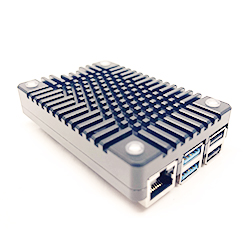Enablement Platform
|
ConOps & Use Cases
|
Portalogiks
Products
|
|
|
- Centralized computing era, place all services, apps, and data in a single place
- Infinitely scalable, elastic compute resource pool
- Software defined everything, delivering IaaS, PaaS, and SaaS capabilities in OPEx acquisition models
- Examples: Amazon's AWS, Microsoft's Azure, Google Cloud Platform, and the IBM Cloud
|
|
|
|
- Does what CDN did to static content but for distributed dynamic workloads such as containers and microservices
- Enables distributing components of an application across multiple endpoints to reduce the latency involved in the roundtrip
- Delivered as a managed service, customers won’t have to deal with the hardware and software maintenance
- With increased investments in hybrid and multi-cloud environments based on Kubernetes, mainstream cloud providers may eventually offer cloud edge services as an extension of their existing platforms
- Examples: Section.io, Volterra.io, Mimik, and Swim.ai are some delivering cloud edge capabilities.
|
|
|
|
- MEC moves the computing of traffic and services from a centralized cloud to the edge of the network and closer to the customer
- With 5G becoming a reality, MEC is becoming the intermediary layer between the consumers and providers of the public cloud
- The edge infrastructure runs within the facility of a telecom provider co-located within a data center or even a cellular tower
- Examples: Telco companies such as Verizon MEC or AT&T MEC, and T-Mobile
|
|
|
|
- Typically a hyperconverged infrastructure (HCI)
- Comes with an all-in-one hardware and software stack typically managed by a vendor
- Demands power and network resources that are available only in an environment like an enterprise data center
- Doubles up as an IoT gateway, storage gateway, AI training and inference platform
- Comes with an array of GPUs or FPGAs designed for managing end-to-end machine learning pipelines including the training and deployment of models
- Examples: AWS Snowball Edge, Azure Stack Edge, NVIDIA EGX A100 and Nutanix Acropolis
|

|
|
|
- Represents a cluster of inexpensive machines
- Compute cluster is powered by an internal Graphics Processing Unit (GPU), Field Programmable Gate Arrays (FPGA), Vision Processing Unit (VPU), or an Application Specific Integrated Circuit (ASIC)
- A cluster manager like Kubernetes is used for orchestration of the workloads and resources in the clusters
- Examples: a Kubernetes cluster of Intel NUC machines or Zotac Mini PC connected to NVIDIA GPUs or Intel Movidius VPUs deployed in a retail store or a restaurant running NVIDIA CUDA/TensorRT or Intel OneDNN/OpenVINO models for AI acceleration
|

|
|
|
- Runs in disconnected, mobile and remote environments such as trucks, vessels, air crafts, and windmills
- Capable of running a full-blown operating system like Linux or Windows
- Based on a single board computer with either ARM64/AMD64 architecture
- Often uses a software stack and AI accelerator to speed up the inference
- Ideal for protocol translation, data aggregation, and AI inference
- Examples: NVIDIA Jetson Nano module running NVIDIA JetPack and TensorRT or an X86 board with Intel Movidius Myriad X Vision Processing Unit (VPU) with Intel’s OpenVINO Toolkit
|

|
|
|
- Sensors connected to the microcontroller generate the telemetry stream that is used by a deep learning model for inference
- The most recent incarnation of the edge computing layer running within the context of a microcontroller and a microprocessor
- When a microcontroller is capable of running a TinyML AI model, it qualifies to be a micro-edge computing device such as OneTech's MicroAI capable of running on a programable logic controller/microcontroller
- Examples: TensorFlow Lite running on a combination of ARM Cortex-M processor co-located with a microcontroller such as nRF52840 or Apollo3 Blue,
|
|